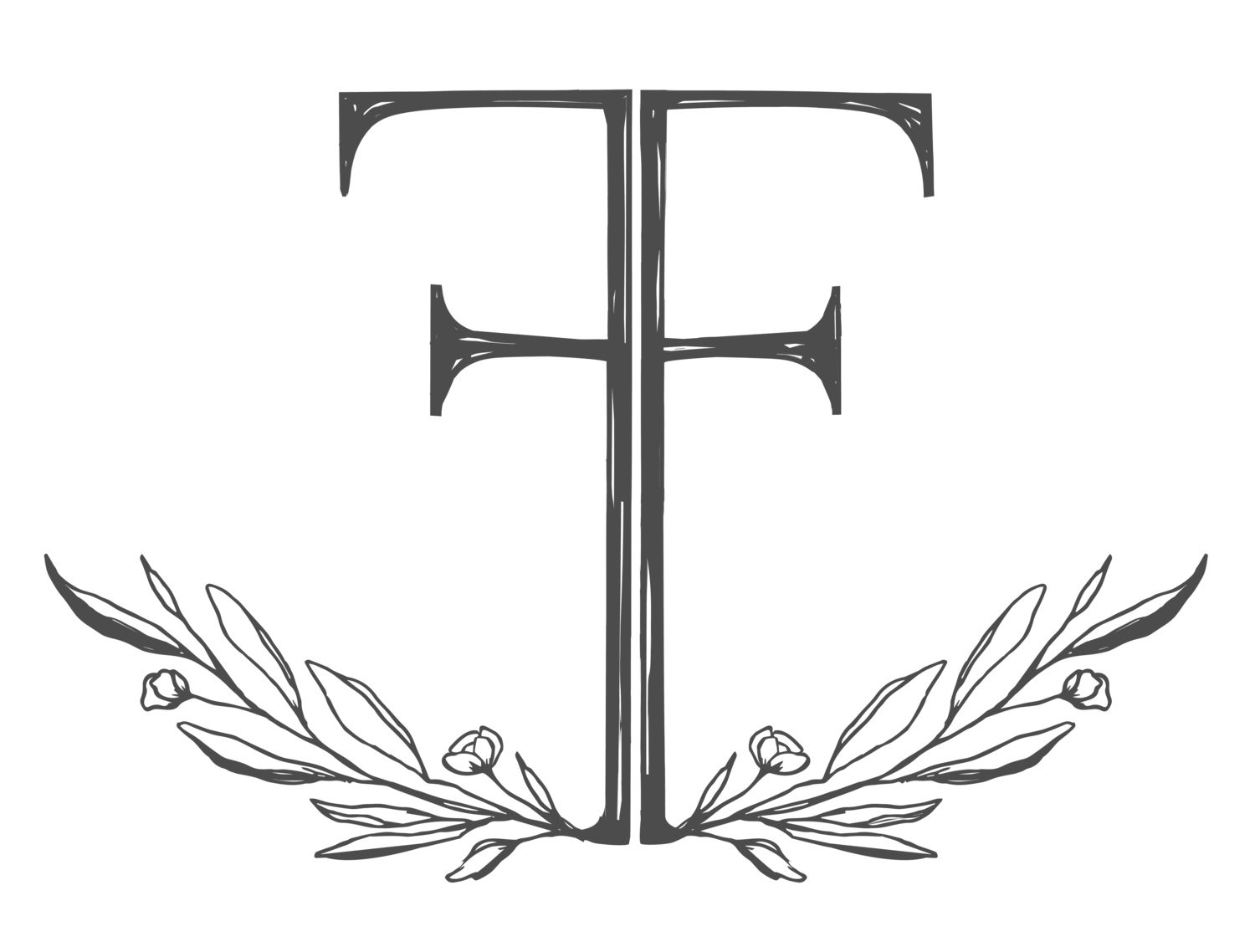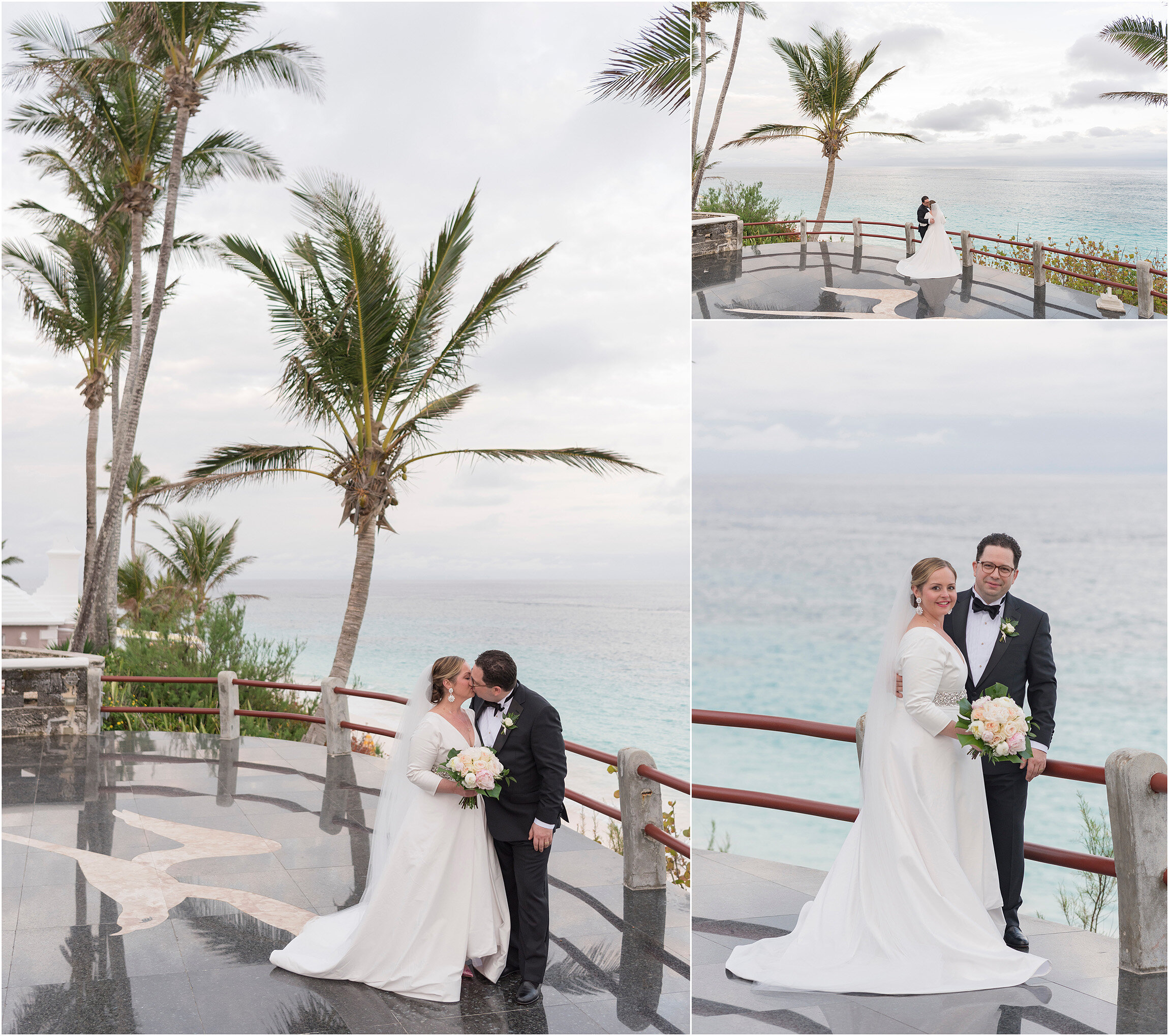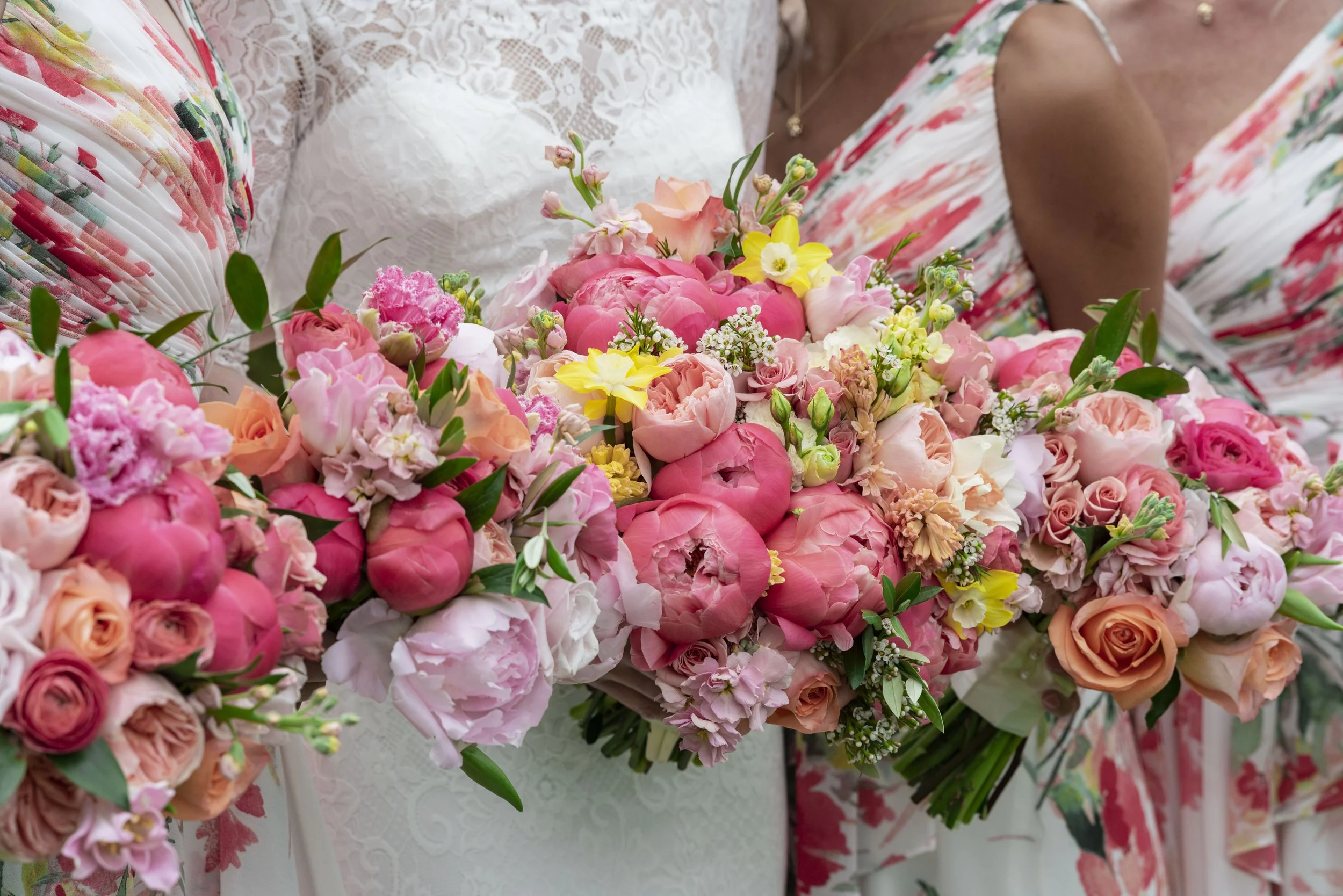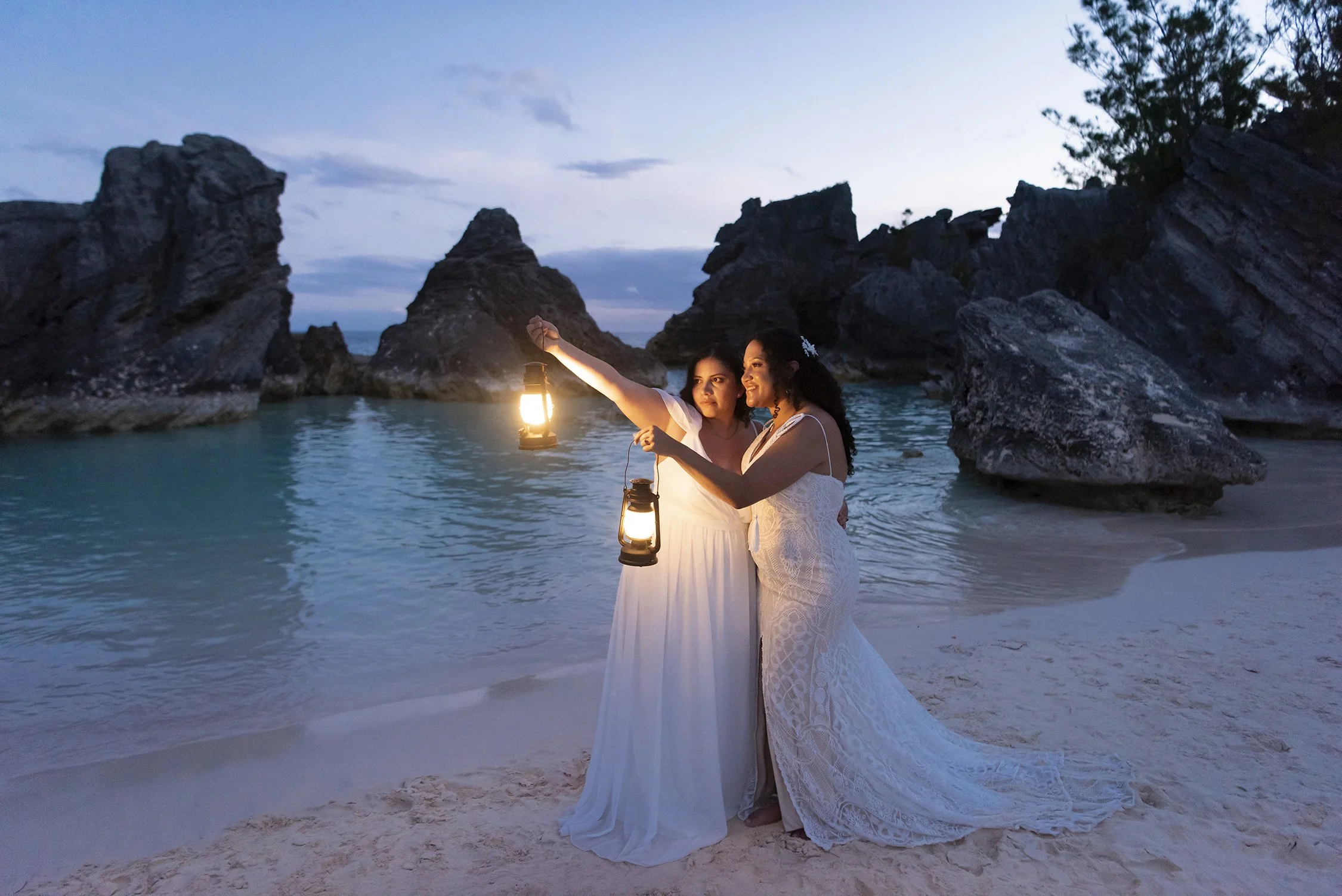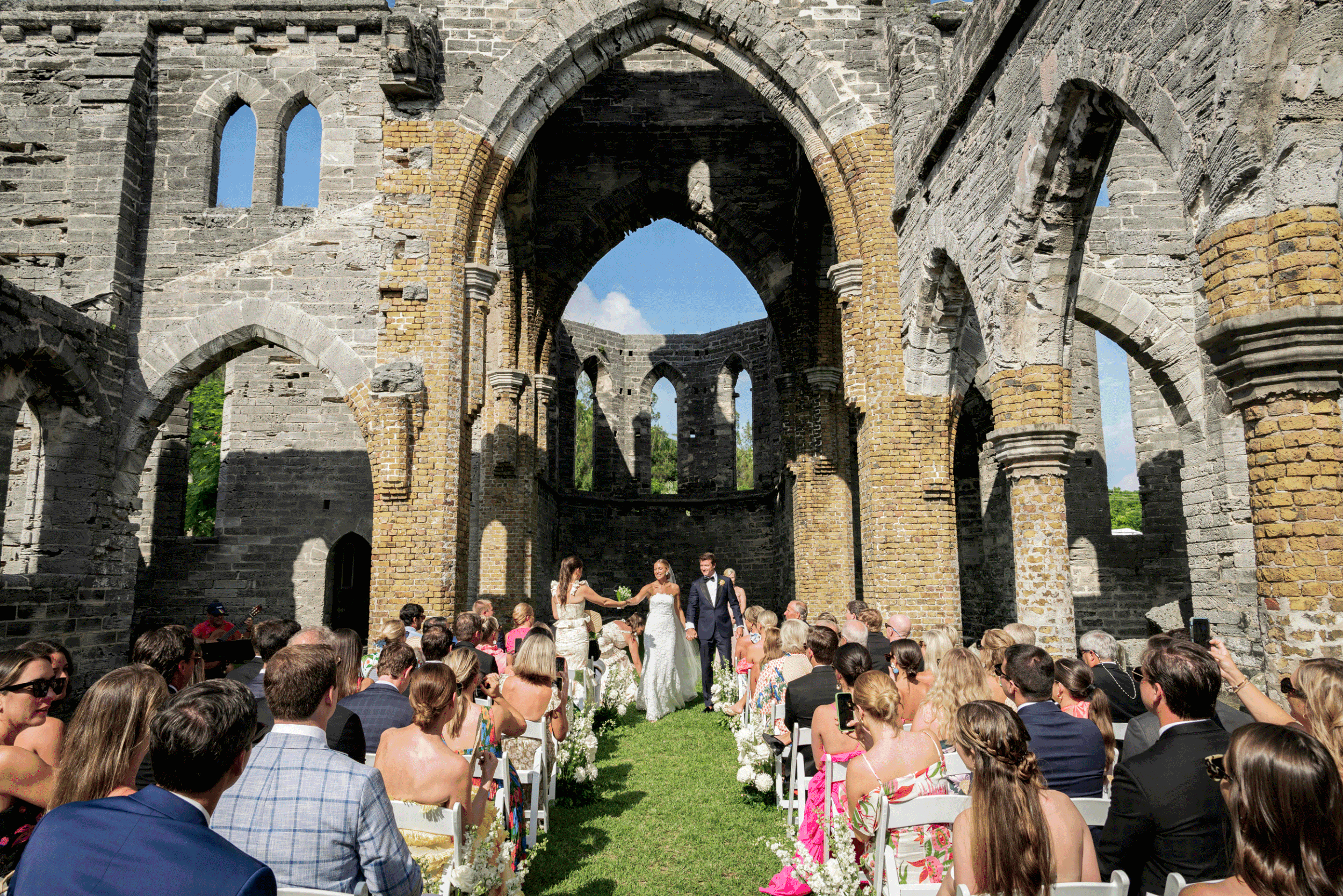You booked an Official Photographer to capture your wedding day, elopement, event, and/or portarit session. The contract has been signed and the initial payment has been made. Congratulations! This blog post is part of my “Contract Series”; a series of blog posts geared towards helping clients understand the legal jargon in their contracts.
Today - I’d like to chat about the “Responsibilities” / “Exclusive Photographer” Clause in my contract. This type of clause is sometimes referred to as an “Exclusive Photographer” or an “Exclusive Agreement” clause. It’s important to note: this type of clause is standard within the industry for professional photographers.
It may go without saying but if your photographer does not have a contract and/or this clause in it - beware! Consider if they are “laid back” and “lax” during the booking process; how “laid back” and “lax” will they be during the editing process and/or regarding protecting and archiving your files?
Perhaps you - the client - have had this thought, “I have hired an Official Photographer for my wedding/event. Although, I’m now thinking to hire another photographer for the same event to capture _________”. Or maybe you’ve thought, “I’m going to hire one photographer to cover _________ and another photographer from a different company to cover ________”. To avoid confusion; definitions below:
Official Photographer - aka Lead Photographer
Second Shooter - aka someone hired by Official Photographer who shoots under the same brand
Other Photographer - a semi/professional photographer or outside Content Creator who is not associated with the Official Photographer
Whatever the scenario is, you may be “putting two tennis balls on the court” - so to speak; individually bouncing around in different directions. Meaning - you may be stifling your own personal experience on the day with too many shooters and thus compromising the quality of each photographer’s work. This is why generally clients do not hire two seperate photographers; one official photographer or one official photoraphy company is hired.
Before you make any decisions: a) review this post and b) talk to whom you consider your Official (Lead) Photographer to review the contract together. Particularly as in some cases, a photographer’s contract will simply note that your Official Photographer has the right to leave the event should another semi/professional photographer show up and start shooting; regardless of the difference of style, format, approach, etc.
But let’s take a step back and review the “ins and outs” of what’s inside Fiander Foto’s Contract. At this stage in the blog post - I think it’s also important to note: all photographers run their businesses differently. I write this based on my own personal experiences after being a professional photographer for over twenty years.
** Gasp! Where did the time go?! **
what are the main reasons professional photographers have this clause in their contract?
1 - Protects Clients’ Investment made with Official Photographer
You entrusted the Official Photographer with an important job. You have both a monitary and an emotional investment in the images that will be produced. By having one Official Photographer (or one photography company), you are allowing that photographer the opportunity to produce their best work. Let’s face it - how many of us have tried to complete our best work with someone “peering over” our shoulder or getting in the way? It doesn’t go well, which is explained more in #5.
2. Protects the Confidentiality Agreement (a clause in the contract) while Maintaining and Strengthening the Quality and Integrity of the Official Photographer’s Images & Company
The Official Photographer will plan out some of the key photographs that will be shot on the day of. This planning comes from years of experience and expertise. Within the Confidentiality Agreements, Clients agree not to disclose to anyone the Official Photographer’s proprietary information, technical data, trade secrets or “know how”, including but not limited to plans, products, services, customer lists, marketing plans, software, photographic gear, props, etc. As these are things that would be shared with others capturing the event, a second photographer from an outside company would breach this clause.
3. Protects the Official Photographer’s Artistic License (which is A clause in the contract)
Throughout the Wedding/Event, the Official Photographer will make artistic decisions that will produce strong images; similar images to the ones you likely viewed when you became interested in booking. These artistic decisions are unique to each photographer; some are made over a lengthy period of time while others may be made on the day as a “snap decision”. To ensure no images are missed nor disturbed, it’s important for the Official Photographer to be able to work without impediments. In this case, a second photographer may impede upon the artistic intuition and decision making process of the Official Photographer.
4. Prevents the Reproduction of Official Photographer’s Work (which is also a seperate clause in the contract)
Reproducing images can be done in various ways: copying, scanning, printing, etc. Reproducing an image can also be caused by a second photographer on the day of the event. For example, your Official Photographer takes the time to check the weather/natural light (when necessary) or incorporate artificial lighting (whether it’s strobe or ambient), poses the clients, prompts specific expressions from clients, lines up the composition and angle, and creates the image. A secondary photographer stepping behind the Official Photographer and taking the same shot is a form of reproduction creatively speaking.
This unfortuantely happend to me a few years back at a wedding in the UK. I was hired to be the Official Photographer at a wedding; the bride oddly enough was also a wedding photographer. After all the hard work to prepare the timeline, discuss the speicifc images that would be captured, and the time/funds spent flying to the wedding / booking accomodations - one of my images was copied, although not by someone you would think! The videographer at the wedding had an assistant - who was also his girlfriend. The videographer’s assitant/girlfriend is a very well known wedding photographer (not videographer) and digital artist. While shooting video - the assistant/girlfriend “flipped the switch” on her DSLR, asked me to “step aside” to capture video, and then took several high-quality still images of the exact same shot I had just lined up. As a result - the well known photographer’s image (who was there to shoot video) was published by the Clients on their social media; thus - Fiander Foto missing out on a marketing opportunity. In this case the missed marketing was a “double whammy” as the Client was permitted to book at a discounted rate. In short - that brief moment and action taken by the videographer’s assistant was not cool. (“…and that’s all I have to say about that.” - Forrest Gump)
This type of reproduction is also an issue if say - a guest at the wedding takes their own photos during the group photo session. Picture this: the official group photos have begun; your cousin is a “budding photographer”. As the Official Photographer, I may arrange those in the photo by their role, height, and/or by the color of their outfits. These group photos are shot in an area with ideal natural light; strobe light may be used to enhance the images. Said cousin ovah’ hea’ steps behind me to take the same photo. The big issue here is - within the Fiander Foto contract - clients have agreed to send all friends/family members to their online gallery so they can purchase thier own prints. If someone is standing behind me taking their own photos, this has a negative impact on Fiander Foto’s deliverables and potential sales after the fact.
More details on this are noted in #9. Although let’s not forget - your photographer is there to work for you; to be reimbursed for their time spent planning, editing, and for any prints and/or albums they may produce after the fact.
5. Prevents Others from Interfering with the Timeline for Photography & with the Official Photographer Work in General
As a professional wedding photographer, I’m used to working with other vendors - particularly videographers. Ninty-nine percent of the time (minus the example given above) - working with a videographer is a dream. For the most part - photographers and videographers are genuinely attempting to capture different material; to produce different files with various outcomes. Even when I work with a second shooter - there is an understanding as to who is going to shoot what. Example: I may capture the official group photos while the second shooter takes candid images of the cocktail hour.
Someone stating, “Don’t worry; we will not get in the way of the Official Photographer” - immediately gives me reason to worry. Speaking from personal experience, I have found it almost humanly impossible for one to keep this promise. Not necessarily because those who may interfere are doing it on purpose, but only because they also have their own agenda to also obtain the best content, videos, or images.
For example: sometimes the best shot is taken from one spot. If your Official Photographer is already in that spot - the other photographer is out of luck and put in a position where they may interfer in order to also “get the shot”. Shoud the other photographer step into the shot - this could lead to Fiander Foto needing to take additional editing time to remove the unwanted figure; thus delaying your images being delivered.
The other photographer in particular may require the use of varioius types of lighting and/or flash that does not go with the Official Photographer’s overall style or brand. The second photographer’s flash may go off and thus interfere with the Official Photographer who may be a) using a different lighting set-up and/or b) wanting to capture a different lighting effect.
When these things occur, the timeline for photography can be slowed down. Thus, slowing the day’s timeline for all the other vendors hired.
In the past, I’ve seen a ceremony start an hour late due to the fact that a second photographer / content creator needed additional time to capture his shots. Added on a few short months before the wedding, the second photographer / content creator was not privvy to the bulk of the planning and was for the most part, a less experienced shooter.
During the First Look, Group Photos, and Sunset Bridal Portraits - having two lead photographers will essentially cut your time in half as two people will be trying to pose you, prompt you, etc. Thus - leaving you with less time to enjoy the day.
When capturing the traditional portraits throughout different times of the day - I take images where my couples, their friends, and family are looking directly at my camera. In other moments, I may ask folks to look away from the camera; to capture a more “candid moment”. Although for the traditional photos: when another “outside” camera is present - a camera that is not associated with Fiander Foto or the hired videographer - there is always the issue of someone looking away from the “hired lens” and towards that other camera. Picture this: everyone in your family photo is looking at the camera except one person (maybe two); that one person (or two) went to smile for the other camera. Your official family photo thus takes longer to capture; perhaps longer to edit. On that note - Fiander Foto is not responsible for those in the group shots not looking at the correct camera.
Again; protect your investment in your wedding images.
6. Prevents Mistaken Identity at Wedding or Event by Guests, Vendors and by those who may see images published after event date.
Picture this: your Official Photographer has shot the entire wedding. There’s a clause in your contract regarding sharing some of the images for marketing purposes with the Venue & Vendors who also worked the event. (Example: your florist may want some images of your bouquet and/or the floral arrangements on the table.) The florists contact the wrong photographer by mistake. From there - the marketing material shared online does not have the Official Photographer’s credit included; thus breaking another clause in the contract.
This could pose a further issue. Picture this: a local publication saw the images shared by the florist and wants to also share the images. The Other Photographer has just “reeped the benefits” of the hard labor put in by the Official Photographer. From there, the Official Photographer misses out on a marketing opportunity to book future weddings.
Picture this: your Official Photographer is at the Cocktail Hour shooting candids; capturing your guests’ emotions and the unique lighting of the event under the “Official Photographer’s” Brand. In the background is the Other Photographer - whether this be a semi/professional or a content creator. An unassuming guest approaches the other photographer and asks for a photo; thinking the Official Photographer is working with the other photographer. A harmless move by the guest; what could go wrong? Expecting a professional image, the guest receives the photo and it’s not professionally composed, lit, or edited. Or the image shot by the Other Photographer is edited in a completely different manner; thus not matching the official images. Guest and Clients are disapointed.
7. Prevents BRAND Confusion for the official photographer
and
8. PROTECTS THE OFFICIAL PHOTOGRAPHER’S REPUTATION: BEFORE, DURING, AND AFTER THE WEDDING / EVENT
Let’s chat about #7 and #8 together. Similar to what’s noted above in #6, if there are two photographers from two different companies - reflecting two different brands - the confusion can occur both “on and off” the event premises. What makes up a “brand” for a photographer may be anything from the type of subject matter captured, the type of gear used, the manner in which the photographer physically presents themselves both in person and online, the layout and design of their website, their logo, the type of albums offered, their paperwork, their social media presence, and of course - how the images “turn out” at the end. One could argue all of these items together make up the photographer’s reputation.
At the most basic level: this confusion can start with how each photographer presents themselves at an event. This “presentation” could mean anything from the clothing worn by the photographer and the assistant, to the amount of gear carried, to how the gear is carried, to how one speaks to guests and enteracts with the clients.
Personally, my assistant and I prefer to dress in a “professional wedding guest” style. Now - before you think, “that sounds a bit superficial” - hear me out as there’s a bit of psychology at play here. Part of being a wedding photographer is being able to communicate not only with the couple but also with the guests. When dressed in a professional manner, it is easier to approach others and take their photo. Not to mention - when dressed as a “professional wedding guest” - there’s also the possibility that the guests will feel more comfortable in front of the camera.
…think back to the line in My Cousin Vinny, “Oh yea - you blend….” - Mona Lisa Vito.
(and if you have not seen that movie, we should have a chat.)
A few years back, I was shooting a wedding wearing all black as were the videographers. This is fairly typical for photographers as black is less likely to reflect back onto the clients. Than say - a bright red dress that could potentially “reflect” a warm tone onto the clients being captured. Belive me when I say - the videographers were not acting professionally; speaking loudly, bossing the clients around, etc. On several occassions, the videographer’s assistant stepped in front of my lens while I was trying to capture the ceremony; a massive “no no”. At one point - a guest came up to me and said, “What’s the name of your company”. I replied, “Fiander Foto”. She said, “…and there are five of you in the group?”. My reply, “Oh no - we work seperately; Fiander Foto is seperate from the video team”. As we were all dressed similarly - it left the guests to assume we all worked together. It was at this point that I realized it’s okay to not dress like a typical photographer; in some cases, it may be better to visually stand out in order to represent my own company.
When considering the final images - each photographer shoots, lights, composes, and edits images within their own Artistic Eye (refering back to the “Artistic License” clause). The two styles of the two different photographers will vary. As is common in the industry - some images may be shared on social media; vendors will be given credit and tagged - including the photographer. If the other photographer’s final images are posted - yet the Official Photographer is also tagged and mentioned - this difference in style (brand) could reflect negatively on the Official Photographer’s work.
9. MINIMIZE EXTERNAL IMPACT ON OFFICIAL PHOTOGRAPHER’S WORK & THE DELIVERABLES
Within your photography contract, you included a specific amount of hours for your event date. Depending on the package, the contract may also note photography coverage for Engagement Photos, a Welcome Dinner, and/or “Post” Wedding Event. At Fiander Foto - my packages include a “print release”, which gives my clients the option to either order prints from me personally or to order prints from a different shop that is more local to my clients’ hometown.
While my clients are given the option of where to purchase their prints, I typically encourage clients to order their prints, albums, and other products from Fiander Foto because my cameras are calibrated to my printers. Meaning - the color one sees in their images on their computer will be the same color they see in the prints.
If there is another lead photographer, a second semi/professional photographer, or outside content creator caputring still images - it may go without saying - but the clients may then chose to not order prints, albums, other items, from the Official Photographer; they may then opt to order prints from the second lead / other photographer.
10. PRESEVE A TRUSTWORTHY WORKING RELATIONSHIP BETWEEN CLIENTS AND THE OFFICIAL PHOTOGRAPHER
When you choose and book your Official Photographer, you are creating a working relationship. Anyone in the work force will tell you, this type of relationship works best when there is trust on both sides.
Adding in a second photographer (regardless of what will be shot and/or how) essentially “attacks” that trust and tells your Official Photographer, “What you will provide will not be enough” or “We don’t trust that you’ll be able to get the job done right - which is why we are calling in a back-up.”
Creating a “photographic competition” at your wedding will not result in strong images for either party.
~
“If you are looking for something additional for your wedding day in terms of photography, ask your Official Photographer first to see what can be added on and/or if your Official Photographer can incorporate a second shooter under the same brand.”
FAQs related to this clause.
Click on a question to expand the answer.
The clause reads, "...Melanie Fiander shall be the exclusive professional photographer retained for the event. Photographer may bring an assistant(s) at her discretion." What does this mean?
If you have signed & booked with Fiander Foto, clients are prohibitted from hiring another professional photographer to capture the same event. I - Melanie - may however opt to bring an assistant to help me on the day. My assistant - who works for Fiander Foto - may simply help me with my gear, organizing images, and/or take photos at my discretion. Clients may also opt to book a second shooter through Fiander Foto. Images captured by assistant and/or second shooter are shot with the Fiander Foto brand in mind.
Does this mean I cannot hire a videographer?
No; you're more than welcome to hire a videographer. I'm always happy to collaborate with a videographer at a wedding or event. In fact, I'm happy to recommend a few whom I have worked with in the past. However - I do kindly request that videographers not interfer with the official photography. Be sure to inquire directly for details.
Do you offer a Content Creator Package?
Yes! You're welcome to add on a Content Creator Pacakge to your Wedding Photography Package. Click "here" for details.
Does this mean my guests cannot take photos at the wedding?
Your guests are welcome to take photos at your wedding. I belive this is part of the "fun" of being at a wedding; guests capturing their own special moments on their own cameras and/or phones. In today's digital world, it is natural for guests to want to take photos and/or to shoot video.
There is however a "fine line" in terms of when a guests "picture taking" becomes more than simply having fun with their camera. I do however kindly request that guests keep their cameras and/or phones out of the aisle during the ceremony + not interfere in general with the official photography; particularly during any portrait sessions.
For this reason, an "unplugged" ceremony is suggested. Let your guests enjoy the day too!
There will be another semi-professional / professional photographer at our wedding as a guest. Can they take still photos? Can they shoot video?
Semi-professional / professional photographers are not permitted to take still images at the wedding. Please refer to the long blog post above as to why.
